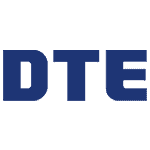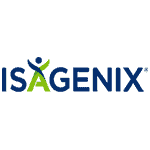Go forward, confidently.
A global professional services firm helping organizations navigate
the intersection between people, technology, and business.
LATEST FROM
NEUDESIC
RESEARCH
2024
Technology Vision
AI is not just part of the tech conversation anymore; it's dominating it. This year's technology vision builds on its disruptive momentum and potential to help companies navigate and leverage the changes to come. Prepare yourself with the critical insights and proactive strategies from the leaders in Enterprise AI.
CASE STUDY
Ushering in an era of AI-enhanced research for Hanover
Hanover Research has been at the forefront of market research, accumulating a vast and diverse repository of reports and analyses. As a testament to their forward-thinking approach, they envisioned harnessing this data more efficiently to cater to their expanding clientele.
INSIGHTS
Beyond AIOps: Understanding the Power of Intelligent Operations
For two decades, Hanover Research has been at the forefront of market research, accumulating a vast and diverse repository of reports and analyses. As a testament to their forward-thinking approach, they envisioned harnessing this data more efficiently to cater to their expanding clientele.
20x
Winner of Microsoft
Partner of the Year
Awards

5,000+
Microsoft certifications with the latest Advanced Specializations in Data & AI and Cloud Migration

20x
Winner of Microsoft
Partner of the Year
Awards
5,000+
Microsoft certifications with the latest Advanced Specializations in Data & AI and Cloud Migration
Capabilities
Our scale, your advantage
Our standing knowledge, experience, and technology accelerate time-to-value for our clients, helping them achieve more faster and for less cost.
Migrate and Modernize
We help clients seamlessly transition to cloud platforms, enhancing efficiency and scalability, while ensuring data integrity and minimizing operational disruptions.
Cloud-Scale Analytics
We accelerate the deployment of modern cloud data platforms and data visualization solutions that bring rapid business insights and data intelligence.
Intelligent Applications
We design and build apps that leverage AI and machine learning to enhance user experience and workflow efficiency for forward-thinking businesses.
Product Experience
We elevate product experiences through innovative design and user-centric strategies, optimizing engagement and functionality to deliver exceptional digital solutions.
Responsible AI
We develop ethical, transparent, and accountable AI solutions, prioritizing fairness, inclusivity, and security that sets the foundation for AI at scale.
AI-Enhanced Industry Workflows
We craft industry specific solutions that operationalize AI across customer-facing and operational workflows.
Microsoft Business Applications
We enhance workforce productivity through tailored Dynamics 365 and Power Platform solutions.
INDUSTRIES
Transformation through
breakthrough technologies
Our Clients
Why Neudesic
A winning approach
We excel where people, technology, and business intersect, focusing on turning challenges into opportunities. Our role is to guide clients, from identifying their core challenges to implementing tailored business solutions, setting them up for sustained success.
Connected Talent Ecosystem
Our diverse array of experts across industries and Microsoft technologies helps clients address a wide spectrum of business challenges.
Actionable
Discovery
We uncover current problems and future opportunities, while architecting and delivering the best possible path forward for our clients.
Purpose-built Solution Accelerators
We build the next phase of innovative solutions on Microsoft technologies that not only meet the unique needs of our clients, but come with a distinct emphasis on enhancing time to value.




















